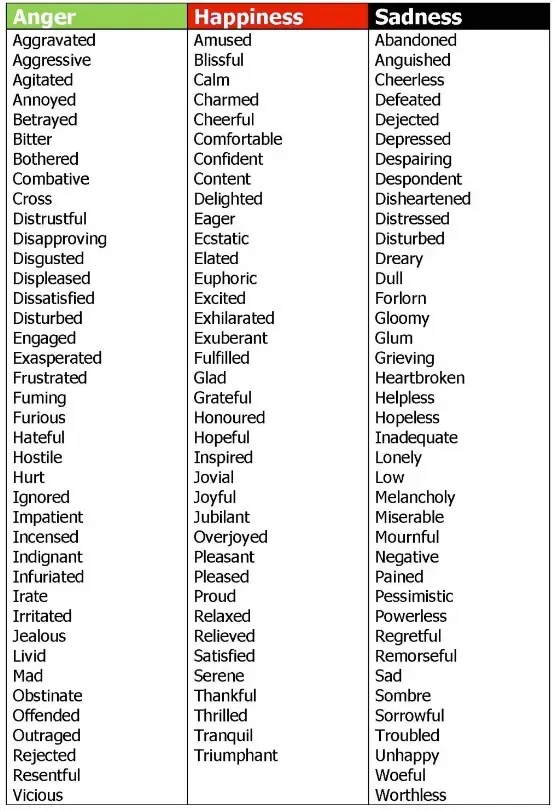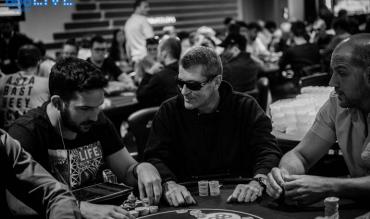The Wyndham Pub on a Tuesday night was desolate. Prince and the Revolution flexed their pecs on the jukebox. A bar fly, thinning grey hair, spectacles perched on a witch’s nose drank from the cesspool, droplets running in rivulets down his chin, and onto his old British Rail shirt.
He was a retired signalman.
“The world has gone mad,” said the bar fly. “You can’t even call them signalmen these days. You have to be a signal person.”
He took another swig and looked at the TV above the bar.
EastEnders was on.
“The world has gone mad!”
I’m sitting in the corner watching this unfold through misty windows. The moonlight seeps through a gap in the curtain, as I moved all-in.
“Call.”
Five community cards later, and I am down another buy-in.
I can’t win.
I don’t know what’s happened?
I am one of the best players in the game. I’ve been studying weekly. I have a handle on where I am going wrong. I am pivoting, and adjusting, like a 1960s chimney sweep, but I keep getting soot in my eye.
I’m into the credit cards.
I’m chasing.
It’s the worst downswing of my life.
“The world’s gone mad!”
Table of Contents
Lessons From a Two-Year-Old
When the tantrum arrives, my instinct is to shout. My wife, the calm one, is not a fan of my approach. My daughter is two, and I am forty-three.
“You’re a bully.”
I guess I am.
My wife’s been teaching me a different approach. When my daughter loses her shit, rather than reach for a pencil, and push it into my eyeball, I pick her up and take her to this poster.
I ask my daughter how she feels?
Invariably, she points to ‘Angry’ or ‘Sad’ and follows up with, “I am Angry” or “I am Sad.”
I ask if she wants to feel this way. If she nods her head, then I offer reassurance - it’s ok to be angry or sad, and to let me know when she wants to change her emotions.
If she shakes her head, I ask her to select a ‘Calming Strategy’ from one of the eleven shown on the poster. Her favourites are hugging a cuddly toy, having a drink of water, or reading a book.
And as I stand there, going through this process, it strikes me, like a horse-kick to the balls, that I had needed something similar when I went through that downswing. There are as many ways to get through a downswing as there are herbs in Percy Throwers’ garden.
But, one thing is for sure, they all involve some form of emotional control.
Then I remember that I didn’t have a poster, but I did have a card that lived in my wallet with the words “You have lost it. Stop playing immediately. Do not put any more money on the table. Go home.”
My wallet was a coffin for that card.
It never saw the moonlight seeping through the gap in the curtain.
It never heard the signal person lamenting his listless life at the bar.
Tacit v Explicit Knowledge
Here’s a tip straight off the bat.
If you want to get through a downswing without feeling like a hundred beetles are eating you alive from the inside, then choose happiness. Yes, it’s a choice. It may be challenging to pull a smiling rabbit out of a hat that wants to suffocate, but it’s doable.
The “Happiness Hypothesis” by Jonathan Haidt is a fabulous resource on happiness. If you can figure out what makes you happy, and do more of that, then the newspaper headlines you manifest will be more optimistic.
One interesting facet of happiness that Haidt talks about is its relationship with ‘Explicit’ and ‘Tacit’ knowledge. Let’s use the example I have given in the paragraph where I welcomed Haidt into our world. I told you that being happy is a choice, but you already know that. That knowledge is called ‘Explicit’ knowledge, and it's like knowing that Paris is the capital of France.
Knowing that happiness is a choice doesn’t mean that every time you’re sad or angry, you can suddenly become happy. ‘Explicit’ knowledge is not enough alone to drag you out of your cave. For this change of emotions to happen, you need to experience this transformation so often that it becomes an automated response.
When this happens, through experience, practice and wisdom - you will have developed ‘tacit’ knowledge, and this takes me right back to the ‘Calming Strategies’ poster that adorns my in-law’s downstairs cupboard.
The 11 Calming Strategies
Most of you reading this will have the ‘Explicit’ knowledge of how to calm yourself when feeling angry, sad, and even heightened feelings of happiness. Achieving emotional equilibrium is vital when going through a downswing.
The 11 Calming Strategies lacquered on my daughter's poster are the weapons you need to have in your arsenal. But their mere presence in your weapons sack is insufficient. You need to use them rigorously and regularly, so you develop ‘Tacit’ knowledge.
Your using these strategies becomes autonomous, or you create a sense of mindfulness so acute that the results on the tables do not produce the emotional storms that can turn a 43-year-old professional poker player, into a two-year-old child.
Before you deploy The 11 Calming Strategies, you need a reminder to use them at the right time. Don’t leave the gold inside the wallet.
BJ Fogg is a behavioural scientist from Stanford University and the expert on developing habit change through a philosophy known as Tiny Little Habits.
Here is Fogg during a TEDx speech on Tiny Little Habits.
Fogg calls his behavioural model B+MAP.
Behaviour = Motivation, Ability and Prompt
In this instance, your motivation to change is your willingness to be a better poker player. Your ability to change depends on turning the 11-Calming Strategies into ‘Tacit’ knowledge leading to a mindfulness mindset that reduces the adverse effect that a downswing has on your life. The prompt is the card I used to have in my wallet. I suggest you take yours out of your wallet.
A prompt is no prompt if you can’t see it.
You don’t have to use a card as a prompt. What’s more important is using a consistent activity as a prompt. Maybe you can use the prompt of going into your wallet as a signal to read a note or listen to an audio recording you have made reminding yourself to use a Calming Strategy.
Maybe you can use the prompt of going to the toilet. Think about your game, the ever-changing environments, and choose a habit that you can turn into an anchor-prompt that leads you towards a Calming Strategy. (A classic anchor habit is brushing your teeth - once I have cleaned my teeth I will go for a run).
Next, it’s crucial at the moment that you begin to experience an emotion that could lead to tilt on or off the tables that you first check in with yourself, and ask - what feeling is present, right now?
You will be surprised at how many people don’t know how to express their feelings, so to help you, here is a list of emotions:

The act of writing down your emotions helps reduce anxiety and stress, as mindfulness becomes the catalyst for change.
Once you understand how you are feeling, it's time to look at that children's poster and select from The 11 Calming Strategies.
1. Close Your Eyes
Closing your eyes allows you to turn off external stimuli, permitting your body and mind to return to a state of homeostasis. You can do this immediately, while at the table, or you can remove yourself from the table to find a quiet spot to do this.
2. Take a Drink
Dehydration leads to anxiety, and there are also studies that show that drinking water makes your muscles stronger, and that water has natural calming properties. Do not drink alcohol as a way to calm down, because alcohol creates more anxiety, and dehydrates you.
3. Stretch Your Body
Stretching increases blood flow, thereby relaxing tension in your muscles. It’s also the perfect way to induce mindfulness and find a more centred attitude. You should frequently stretch when playing poker.
4. Hug a Stuffed Animal
Or a human being.
Hugging increases our levels of oxytocin, leading to an amplified feel-good factor as it lowers the stress hormone cortisol. It’s also a fantastic and immediate mood changer because we are conditioned to feel good or safe during a hug.
5. Take 3 Deep Breaths
When you slow your breathing and become more mindful, your heart rate slows, reducing stress and anxiety. Another great way to incorporate breathing into your calming strategies around the poker table is to have a meditation app on your phone like Sam Harris’s “Waking Up” that has a series of 10-minute meditations that you can listen to before playing again.
6. Draw – on Paper
One way of removing stress and anxiety from your body is to transfer those thoughts and feelings onto paper. Focusing on drawing, or colouring in, takes your mind away from the pressure of the game and enables you to enter a mini-state of flow, increasing your creativity.
7. Read a Book
Like the “Happiness Hypothesis” by Jonathan Haidt!
8. Think a Happy Thought
An excellent way to conjure up the happy thought is to create a playlist of music that immediately evokes a feeling of nostalgia. Gratitude is also crucial here. You can pair this with 'drawing', above. Quickly draw or write a list of things you are grateful for, and it will put your downswing into perspective.
9. Do a Puzzle
Similar to drawing.
Focusing on something else, allows you to enter a state of mini-flow, and takes you away from the ugly side of the game.
10. Count to Ten
See breathing and closing your eyes.
11. Squeeze a Ball
When you’re anxious and stressed, your body tightens its muscles. Having something handy to squeeze, helps to remind the brain to release that tension. Just make sure that you don’t choose to squeeze the neck of the person who has just taken you down to value town.
Yes, that's it.
You don't have to join an online poker training site or hire a life coach. We all know that these strategies work, but we haven't used them often enough to turn explicit knowledge into the tacit understanding that fills the minds of the best players in the world.
Nail this, and it's child's play.


